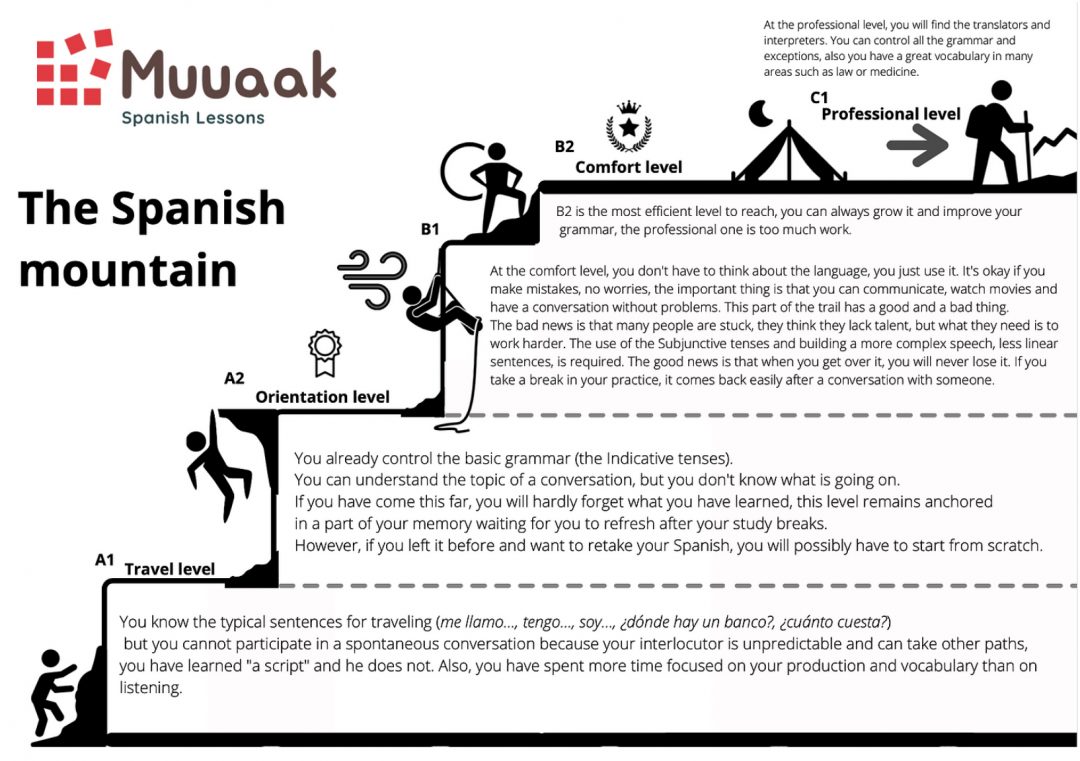We have already talked about the importance of commitment and habit to study Spanish and when you dedicate time to the language, what strategies do you use? Here are two techniques that will lead you to the top of the mountain and they are not doing exercises in the grammar notebook.

1) Memorize your list
Update your list daily in your notebook with phrases heard from your teacher, extracted from the material or created by you, including new words or grammar topics. Make two columns, one in Spanish and one in your mother tongue where you will write the translation. Your exercise will be to cover the column in Spanish and try to produce those phrases aloud or in your head. Also, you have the option of taking your work to another level by recording yourself while you are translating in order to listen to yourself after and repeat the exercise in reverse.
And you would say … translating and memorizing? They are old study techniques! Yes, but they work. The only rule is to learn them in a context where you are taking part, not an isolated phrase you copied. For example, from a conversation with your teacher, a text, a podcast…
Have you ever thought of a word learned in a song or heard in a series and you remember the complete phrase where it came from? Because this is how language is built and stored in our brain! By chunks, blocks. Understanding grammar rules helps understand composition logic, in other words, the glue. However, memory is what makes you retrieve the pieces, like LEGO bricks, so that you can build the phrase you want based on frequently used lists in your brain (your gold list). This is the reason why, in your mother tongue, you speak without asking or knowing anything about grammar. So, dear student, without memory work, all the grammar workbooks you complete are useless.
Have a look to the Gold List method to learn your phrases effortlessly! If you write your sentences and return to them two weeks later, you will see that you will remember 30% of what you wrote. This system of writing and cyclical review will allow you to anchor your lexical “blocks” in your memory without realizing it.
2) Speak alone
Yes, in Spanish with yourself, out loud or “in your head” while driving, taking a shower, cleaning your house, having a walk … those wonderful monologues you usually have with yourself, you can having them in Spanish. Of course, as far as possible. If your level is beginner, include short phrases, for example:
“Ohhh me encanta ducharme. El agua está caliente, ¡qué bueno! I am very tired… mañana, I have to call my sister… mi hermana… ¿Dónde está mi towel?”
Don’t feel weird or crazy, because this is a technique that many students use unconsciously, we have as an example the typical testimonies: “I am capable of thinking in Spanish” or “sometimes I dream in Spanish”.
It is a strategy that consciously or unconsciously helps your brain to practice, so you no longer have excuses! If you can’t travel or don’t have Hispanic friends, you know, chatting with yourself is free, intimate (without complexes or fears), accessible (at any time) and if you do it daily you will notice how your level of Spanish advances by leaps and bounds.
Information adapted from Language Mentoring by (PhD) Lýdia Machová.





